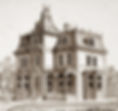Mansard Roof: History, Design, and the Best Material for Mansard Roof
- Scott G.
- Feb 17
- 4 min read
Mansard roofs have been a part of architecture for centuries. They have both aesthetic charm and some very practical benefits. If you're considering buying a home with a mansard roof, you will want this knowledge. Let's delve in and talk about mansard roof history, usage, and the best material for a mansard wall.
History of the Mansard Roof
The mansard roof was named after the French architect François Mansart. This mansard style gained popularity during the 17th century in France, becoming a staple of classical French architecture. After France, the mansard roof was adopted in architecture worldwide.
Architectural Characteristics:
What is a mansard roof? Mansard roofs have two slopes on each side: an upper and a lower slope. The lower slope is at a steep angle and is often accompanied by dormers. A mansard roof offers additional living space or "attic rooms" while also creating a distinctive look.
Mansard Roof Benefits
Additional Living Space: Mansard roofs create extra living space by allowing for an additional floor or attic room within their steeply sloped structure. This is why most mansard roofs have dormers, which provide natural light and ventilation. This mansard design has been especially beneficial in urban areas where maximizing space is essential.
Aesthetic Appeal: The distinctive double-pitched design of the mansard wall became associated with elegance and sophistication in the architecture of the time, providing buildings with a grand, imposing appearance. When a mansard wall is used, the house becomes pretty hard to miss.
Versatility in Design: Mansard roofs offer architects and builders flexibility in designing and constructing buildings. The lower slopes can vary in their steepness, allowing for a wide variety of architectural styles and adaptations for different climates and preferences.
Regulatory Advantages: Mansard roofs were used to circumvent building height regulations in certain area. By utilizing the upper slope as a hidden floor, builders could maximize usable space without exceeding height restrictions from local building codes.
Enhanced Drainage: The steep pitch of the lower slopes facilitates efficient drainage, reducing the risk of water pooling or leaks compared to other roof designs of the time.
The practical benefits of additional space combined with the aesthetic appeal have contributed to the enduring popularity of mansard roofs in architectural history. Today, they remain a symbol of classical elegance and are preserved or replicated.
Special Requirements When Roofing Mansard Walls
Structural Integrity: Roofing mansard walls requires careful attention to structural support and load-bearing capacity due to the steep angles of the roof's lower slopes. Material and sheathing must be checked to ensure you are within local codes and manufacturer specs.
Waterproofing: Waterproofing is crucial; mansard roofs have multiple slopes and intersections that can be vulnerable to water penetration if not properly sealed. I always use a custom piece of drip edge for the transition to the lower slope. Typically, we also use ice and water on top of the drip edge.
Flashing and Sealing: Proper installation of flashing at roof transitions, dormers, and intersections will prevent leaks and maintain the roof system's integrity.
Best Material for a Mansard Roof
Slate: If money is not a consideration, slate is the absolute best material for a mansard roof. If natural slate is used, this often requires changing the decking to accommodate the heavier weight of the slates. We use a batten system and screws to ensure the slates do not slip over time. Synthetic slate is also a lighter weight option that might not break the bank.
Metal: Metal roofing offers the best value and longevity. Options such as standing seam or metal shingles provide excellent durability and low maintenance, making them suitable for steep-sloped mansard roofs. We would also recommend a corrugated metal panel before shingles.
Shingles: Shingles would be my last choice for a mansard roof due to the high risk of slippage on the steep, nearly vertical slope. To combat this, we always use an enhanced nailing pattern along with roofing mastic to help secure the shingles and prevent delamination. This is how to prevent shingles from slipping on a mansard roof. However, even with these precautions, shingles are prone to slipping over time. That being said, they remain the most affordable option for a mansard roof.
Expertise in Roofing Mansard Walls
At Birmingham Roofs, we specialize in roofing, and mansard walls are always a fun project to work on. Our experienced team understands the unique challenges and requirements of these mansard roof jobs. We would love to speak with you and go over some options for your roof.
Custom Solutions: We offer custom roofing solutions tailored to our individual customers and their houses' needs.
Professional Installation: With years of experience in the roofing industry, Bham Roofs ensures a seamless professional installation.
Customer Satisfaction: Our commitment to customer satisfaction is unparalleled. You, the customer, and your home are our number 1 priority.
Elevate Your Home with Birmingham Roofs
If you're in Alabama and considering a mansard roof installation, renovation, or repair, Birmingham Roofs is your expert. When restoring a historic property or designing a new home with a mansard roof, you will want the roofing experts. We provide you with custom roofing solutions tailored to your individual home.
Contact us today to schedule a consultation and discover how Birmingham Roofs can help you with your mansard roof project using materials like slate, metal, or architectural shingles.






